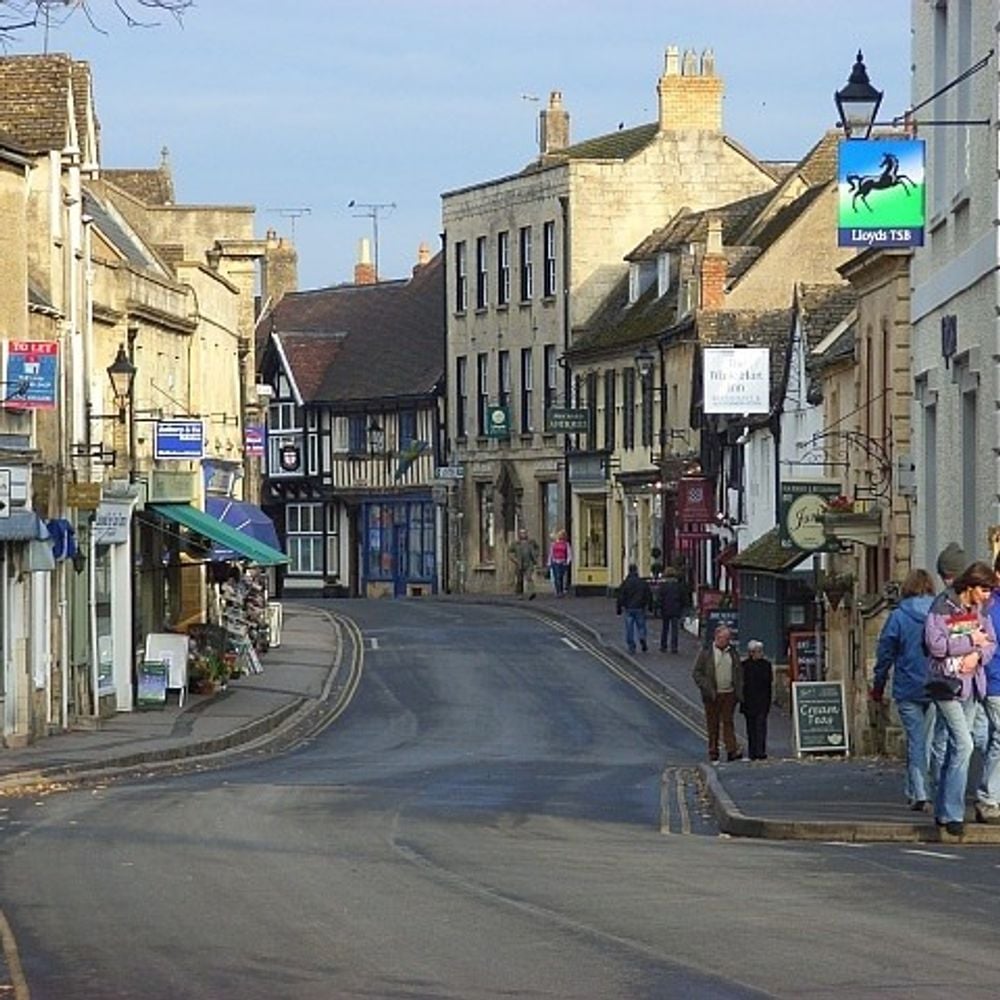
A History of Winchcombe

The ancient Anglo Saxon town of Winchcombe is situated in a beautiful Cotswold valley mid-way between Broadway and Cheltenham (approx each 15 minutes away by car). It stands on the river Isborne and is referenced in the Domesday Book as Wincelcombe.
It is much like a hundred other similar small market towns with its warm Cotswold stone architecture and feel of timelessness. The name means 'valley with a bend', and today Winchcombe still retains streets which curve gracefully along the 'combe'. The inns, restaurants, tea rooms, and shops set among Winchcombe's three main streets are full of the character of times past. One of the wonders of Winchcombe has to be its eclectic mix of unique retail outlets, ranging from antiques shops and centres (including an auction house), to interiors and gift shops, art galleries, fashion, hair and beauty salons, a wide range of tea rooms, pubs, cafes and restaurants and a delightful sprinkling of quirky vintage shops.There’s even a steam railway – the immaculate station is located to the North of the town.
Similar to so many Cotswold market towns the history of the town has been very dependent on crops. Interestingly here, the key one was for a brief period tobacco; in 1619 a London merchant, John Stratford, purchased spare land in and around Winchcombe and planted tobacco having spied an opportunity in the market for the new fad. It didn’t last long however - later that year the British government passed an Act banning Tobacco growing in England, just as Mr Stratford’s first crop in Winchcombe was ready to harvest. Following this, much of the land on the Cotswolds was turned to growing flax but in fact tobacco growing (including the slightly hallucinogenic Worcestershire version) continued on until late in the 17th century. In Winchcombe the parish’s tithe barn was used to dry the leaves, and houses in North Street to store the cured tobacco. As a final postscript, the land to the south of Winchcombe, where the district hospital once stood, was once known as Tobacco Piece. There is also Tobacco Close, on the way into the town from Cheltenham.
Onto matters more spiritual; the renowned St. Peters church has an altar frontal said to have been worked by Catherine of Aragon, and is guarded by forty of the country's finest grotesque gargoyles. The church has an unusually fine weather cock measuring nearly 6 feet from beak to tail. Originally at the Church of St. Mary, Redcliffe in Bristol, it came to Winchcombe in 1872. Not only this - in addition one of the gargoyles is reputed to be the inspiration for The Mad Hatter from Alice In Wonderland; Lewis Carroll is known to have spent some time in the town and surrounding area.
Nearby is St Kenelm's Well, commemorating a 9th-century martyr. The story goes that the boy king Kenelm was murdered by his sister. When the men bearing the body stopped here to rest, they set down Kenelm's coffin and a spring gushed forth from the ground. The waters of Kenelm's Well are reputed to have healing properties.
The surrounding area to the town itself is equally fascinating. Just a mile from Winchcombe are the ruins of Hailes Abbey. At one time Hailes was one of the most popular pilgrimage centres in Britain, as the abbey claimed to possess a phial of Christ's blood. After the Dissolution of the Monasteries destroyed the Abbey, the "blood" was revealed to be a mixture of saffron and honey. So popular was the abbey to medieval pilgrims that the Prior of Hailes built a hotel to house the richer visitors. This hotel lives on as The George Hotel. The building itself has been altered several times, but still retains an open gallery over the courtyard. Today, the abbey is a peaceful sight, with ruined arches lying in a quiet meadow.
It’s fair to say that most visitors to the area come to Winchcombe to visit Sudeley Castle. Looking down on the town, the castle was the final home of Queen Catherine Parr after the death of Henry VIII. Following her marriage to Sir Thomas Seymour a few weeks after Henry's death, Seymour then made advances towards princess Elizabeth, later Queen Elizabeth I. The pregnant Catherine fled to Sudeley, where she soon after gave birth to a baby girl, before sadly dying a few days later. She is buried in the chapel, and the castle has displays of objects associated with her including the letter she wrote accepting Thomas Seymour's marriage proposal.
Finally, just a short walk along the Cotswold Way from Winchcombe brings you to one of the finest Neolithic remains in Britain, Belas Knap burial chamber. Belas Knap was built about 3000 BC as a many-chambered tomb. When the site was excavated in 1863, 38 skeletons were found. Remains from the excavation are on display at the church museum in Winchcombe, along with several other artefacts from the surrounding area.

Mortgage Rates - Recent Developments
Charlie Huxley, the founder of Huxmor Limited, discusses the recent developments in mortgage rates. While the changes may not be dramatic, they create a vital opportunity for homebuyers and landlords to take decisive action and leverage on strategic advantages.
Market Update
Pub Of The Month - The Woolpack, Slad
Nestled in the Slad Valley, The Woolpack has been celebrated for its unique charm for more than 300 years.
Pub Of The Month
Five Of Our Finest Country Home's
Exploring timeless elegance and rural charm in the heart of the Cotswold countryside and surrounding areas.
Five Of Our Finest Country Homes
Crucial Insights On The Renters' Rights Bill
Gain a comprehensive understanding of the latest Renters' Rights Bill. Vanessa Carter, the Head of Lettings at Butler Sherborn, shares valuable insights from the agency’s perspective, while Bethen Abraham, a legal expert from Willans LLP Solicitors, delivers an informed legal stance on this significant legislation.
Renters' Rights Bill - Q&A




